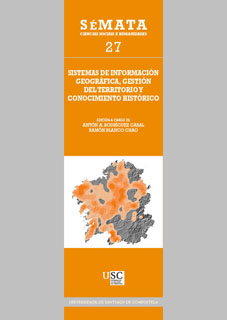Evolution of the Palaeolithic sites Settlement Patterns from Monforte de Lemos (Lugo, Galicia)
Main Article Content
Abstract
This paper is a new approach to the study of the Palaeolithic sites located in the Monforte de Lemos basin. Their distributional study allow us to charasterize the settlement patterns since the Lower Paleolithic (Mode 2) to the Upper Paleolithic (Mode 4) Geographic Information Systems have been applied in order to define the different patterns and to perform Terrain Analysis such as the calculation of aspect, slope, average height, least-cost paths, visibility and proximity to river courses and routes. This spatial and diachronic approach allow identifying the evolution and variability of the settlement patterns of the paleolithic sites adscribed to the Mode 2, Mode 3 and Mode 4.
Keywords:
Article Details
Most read articles by the same author(s)
- Carlos Rodríguez Rellán, Ramón Fábregas Valcarce, Galician rock art: an approach from the Spatial Statistics and the GIS , Sémata: Ciencias Sociais e Humanidades: No 27 (2015): SIG and historical knowledge
- Augusto Pérez Alberti, Begoña Fernández Rodríguez, Domingo Luis González Lopo, Presentación , Sémata: Ciencias Sociais e Humanidades: No 29 (2017): Catastrophes and Disasters
- Cristian Lorenzo Salgueiro, Carlos Rodríguez Rellán, Ramón Fábregas Valcarce, Análise microespacial do asentamento prehistórico de Monte dos Remedios (Moaña, Pontevedra) , Gallaecia: revista de arqueoloxía e antigüidade: Vol 36 (2017)
- Víctor José Barbeito Pose, Ramón Fábregas Valcarce, Carlos Rodríguez Rellán, Alfonso Fariña Costa, Alexandre Paz Camaño, Mª de los Ángeles López Taboada, Ana Mª Suárez Piñeiro, Juan Manuel Abascal Palazón, Gonzalo Francisco Fernández Suárez, Gregorio Casado González, Alia Vázquez Martínez, María Vanesa Mariño Calvo, From the sierra to the lowlands: new data on the settlement of the Barbanza Peninsula from Prehistoric to Medieval times , Gallaecia: revista de arqueoloxía e antigüidade: Vol 37 (2018)
- Xurxo Pereira Martínez, Ramón Fábregas Valcarce, Novos datos sobre a arte rupestre no Miño litoral. O concello de As Neves (Pontevedra) , Gallaecia: revista de arqueoloxía e antigüidade: Vol 38 (2019)


